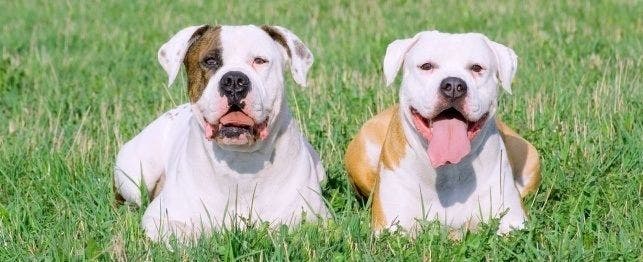
When Your Pup Turns Adolescent – What You Should Know
Understanding Canine Adolescence
He tears through the house, leaving a mess in his wake. She’s suddenly shy and her happy personality has dissolved into moodiness. Sometime after your dog reaches 6 months, he or she will plunge headlong into canine adolescence – where hormones rule.
Like people, dogs react differently to puberty. Some have an easier time of it than others, but a “teenage dog” of any breed can display unpredictable, even uncharacteristic behavior – which can last an entire year. Behavior seems to depend more on the individual dog than on the breed.
If you visit your local pound, you’ll find a disproportionate number of teenage dogs in the kennels: Many folks become so disillusioned with their pets at this stage that they put them up for adoption. To make matters worse, these rejected dogs often make the worst impression on potential adopters because they are deprived of the attention, guidance and stimulation they need.
Physical Changes in Adolescent Dogs
The onset of puberty will be most recognizable in your male dog. He’ll begin lifting his leg to mark territory and mounting other dogs, humans, and even furniture.
It’s not unusual to discover a puddle of urine, left by a formerly housebroken adolescent dog. Females use urine to attract mates; males use it to mark their territory. In adolescence, such tendencies may remain even though your pet is “fixed.” (A neutered dog is never an “it” but simply a hormoneless, toned-down version of its biological sex).
A non-spayed female experiences her first heat around 8 months of age. A neutered male reaches sexual maturity at about the same time. Spaying or neutering before seven months evens out the vicissitudes of youth somewhat, but you can’t avoid them altogether.
The urge to chew also drives your teen-puppy‘s actions, and often is the first evidence that your dog is getting his secondary teeth and is coming of age. If you’ve let your strict crating rules lapse, you may well arrive home one day to find some significant damage done to a sofa, wooden bedpost, plastic toy chest, or other similarly chewable object. As teeth first erupt, and even after they’re beyond the gum line, they need a good workout to ensure strong and accurate placement. All that gnawing helps align a dog’s teeth in his jawbone. So, replenish your supply of rawhide and chew toys and hang on for the ride!
Also around this time, your dog goes through an intense period of shedding his fuzzy puppy coat and acquiring the type of hair distinctive to his breed. Be prepared to brush him and vacuum your home often.
The fact that your dog’s skeleton and muscles are growing by leaps and bounds during his teen months can be a blessing for your relationship. You can admire the enthusiasm and perseverance he applies in trying to coordinate his gangly limbs and get a chuckle out of his efforts, same as you did when he was a cuddly little puppy.
Keeping Your Adolescent Dog Active
Your teen-age dog will benefit and learn from distractions – exercise, play, toys, and the company of other dogs. If you alone can’t keep up with his high energy level, arrange for him to frolic in a dog park with other canine teens. In their absence, find a few animal-loving human teens who don’t mind the company of a non-stop dog, as they rollerblade around or shoot baskets.
It’s easy to get into the practice of endlessly telling your dog “no” when you observe unwanted behaviors. But it’s not a good pattern to adopt. Instead, distract the dog from learning the unwanted behavior in the first place by providing enough toys, trips to new places and other stimulation. That is, teach your dog what you want him to do, not simply what not to do.
Taking Charge of Dog Adolescence
Brace yourself for dealing with the many moods of adolescence. If your teenager frequently becomes submissive, don’t scold her. Kneel down on her level and praise her when she responds positively. If he becomes aggressive, frightened, or anxious, don’t rush to calm or comfort him, because that reinforces the behavior, by giving him the attention he wants.
Even when it seems hopeless and your dog seems to have forgotten all he has learned, don’t give up on training your dog. In fact, obedience classes are just what your dog needs. He’ll be around other dogs and learn to relate to them. He’ll develop confidence and self-control that will serve him throughout his life. And, at a stage of life that can be confusing and difficult, he’ll get a chance to spend lots of time interacting with his favorite companion – you.